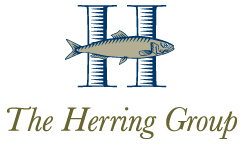[vc_row][vc_column][vc_single_image image=”16340″ img_size=”full” alignment=”center” lazy_loading=”true”][dt_quote font_size=”h2″]”I have found that we have an alignment issue.” – a landscape business owner[/dt_quote][/vc_column][/vc_row][vc_row][vc_column][vc_column_text]Without alignment, you cannot price accurately.
Without alignment, you cannot hold people accountable for achieving the estimated gross margin.
It’s a big deal.
This landscape business owner had run the test that I recommended in the pricing webinar that I did with Kevin Kehoe of the Aspire Software Company. It’s a simple test to run in Aspire. We run it monthly for our clients. It’s not the only test of alignment, but it is an important one. I will show you how to do it.[/vc_column_text][/vc_column][/vc_row][vc_row][vc_column][vc_column_text]
What is alignment?
Alignment means: Job Costs Estimates = Job Cost Actuals = QuickBooks
Why is alignment so important?
There are several reasons.
We want owners and their employees to price with confidence – confident that the pricing will yield the planned net margin. If there is no alignment, there should be no confidence.
We want owners and managers to trust the data so that they can use data to make decisions. Without alignment, no one should trust any data other than QuickBooks. QuickBooks is great, but it is difficult to make strategic and tactical decisions based on a QuickBooks income statement and balance sheet.
We want efficient and effective communication among owners and managers. If the data is not aligned, these people waste a lot of time talking about the data instead of taking action based on the data.
Why is alignment a frequent problem?
Because alignment involves accounting, organizing numbers, and math. Most landscape owners and managers have better (and more enjoyable) things to do with their time. We just happen to like numbers. Frankly, we would rather manage numbers than people.
In addition, alignment is not a once and done problem to be solved. It is a situation that requires periodic maintenance.
How do we test for alignment?
I am going to share two tests – one this week and one next week. Here’s the first test:
We need to make sure your estimated labor rate is equal to or slightly greater than your actual labor rate.
You will need to run a Pivot Report | Work Tickets Report in Aspire, export to Excel, and then add two formulas.
The file will look like this:[/vc_column_text][/vc_column][/vc_row][vc_row][vc_column][vc_single_image image=”16334″ img_size=”full” alignment=”center” lazy_loading=”true”][/vc_column][/vc_row][vc_row][vc_column][vc_column_text]The area shaded in beige represents the Pivot Report | Work Tickets Report. The area to the right contains the formulas to calculate the burdened labor rates. These formulas divide the labor cost by the hours.
In this example, the actual burdened labor rate for the Chemical division is $20.46, and the estimated burdened labor rate is $20.88. Those rates are aligned.
The Enhancement and Maintenance labor rates are not aligned. Either the actual burdened labor rate is not really the actual rate or the estimated burdened labor rate is out of date.
The actual labor rate is determined based on the actual pay rate and the burden % — both of which are entered in the employee contact record. If these records are not maintained, then “actual” will not really be actual. To be sure, we always reconcile these numbers to QuickBooks.
The estimated burdened labor rate is entered in the Items catalog.
So, do you have an alignment problem?
If you do, you can fix it.
Part of the “magic” in fixing it involves calculating burden correctly. I will cover that topic in my next email on alignment.
If you would rather have us fix these problems for you, you can set up an appointment here, and we can discuss alignment, which is the first step in our proprietary process, The Path to 12%. We believe that every landscape company using Aspire should create a plan to have a net margin of 12% (or more).[/vc_column_text][/vc_column][/vc_row]
